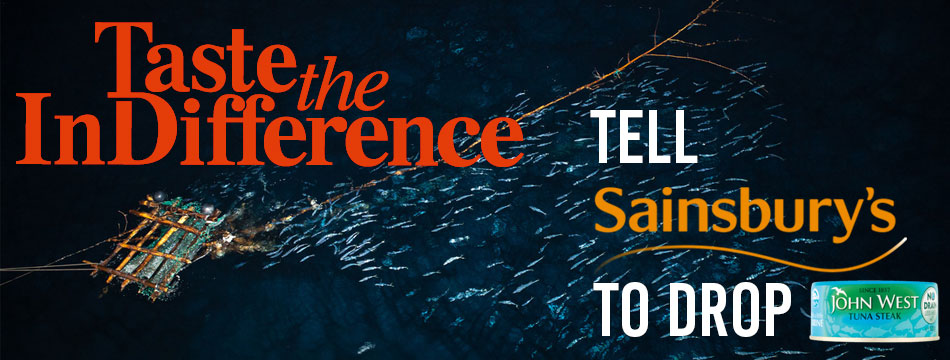Most fishing gear is not selective. This means that as well as the 'target' species of fish it catches, any number of 'non-target' species may also be hauled in. This 'incidental' catch of other species is referred to as 'bycatch'.
Globally, it's estimated that a quarter of what is caught is wasted - thrown back into the sea dead because it has no commercial value. Fishing quotas mean that fishermen targeting a particular species or size of fish will throw back any 'non-target' or 'too small' fish that they catch.
Bycatch is not limited to unwanted fish species. All types of marine life including whales, dolphins, porpoises, fur seals, albatrosses and turtles are killed as bycatch. Even feared predators like sharks are killed in their millions each year. Tuna fisheries, which in the past had high dolphin bycatch levels, are still responsible for the deaths of an estimated one million sharks annually.
Different types of fishing practices result in different animals/species being killed as bycatch: nets kill cetaceans, longline fishing kills birds, and bottom trawling devastates marine ecosystems.
An estimated 300,000 cetaceans (whales, dolphins and porpoises) die as bycatch each year, because they are unable to escape when caught in nets. Birds dive for the bait planted on the end longlines, swallow it (hook and all) and are pulled underwater and drowned. The Patagonian Toothfish fishery off South America alone is responsible for the deaths of thousands of albatrosses a year.
Bottom trawling is a destructive way of 'strip mining' the ocean floor, harvesting the species that live there. As well as the target fish species, this also results in bycatch of commercially unattractive animals like starfish and sponges. A particularly nasty variant is known as beam-trawling, where heavy nets and chains are dragged across the sea-bed. The devastation that results is often irreparable.
The fisheries with the highest levels of bycatch are shrimp fisheries - often over 80 per cent of a catch comprises marine species other than shrimp.
The cost of bycatch to the ocean ecosystems is immense. And fisheries with substantial levels of bycatch are clearly neither acceptable nor sustainable.
Around the UK, the most significant example of bycatch is that of small cetaceans (dolphins and porpoises) in fishing nets. Harbour porpoises are particularly at risk from static 'bottom-set' trawling, whereas dolphins are most at risk from huge trawled nets because they feed on the same small fish as the target species (watch our pair trawling animation). Evidence of the growing scale of this problem is washed up on beaches around the south west of England and northern France every year in the form of hundreds of dolphin corpses.


